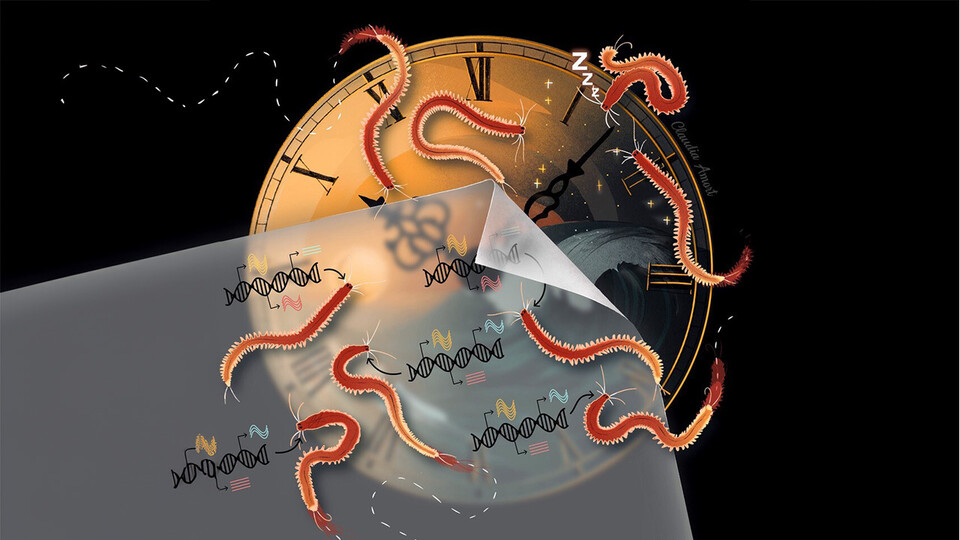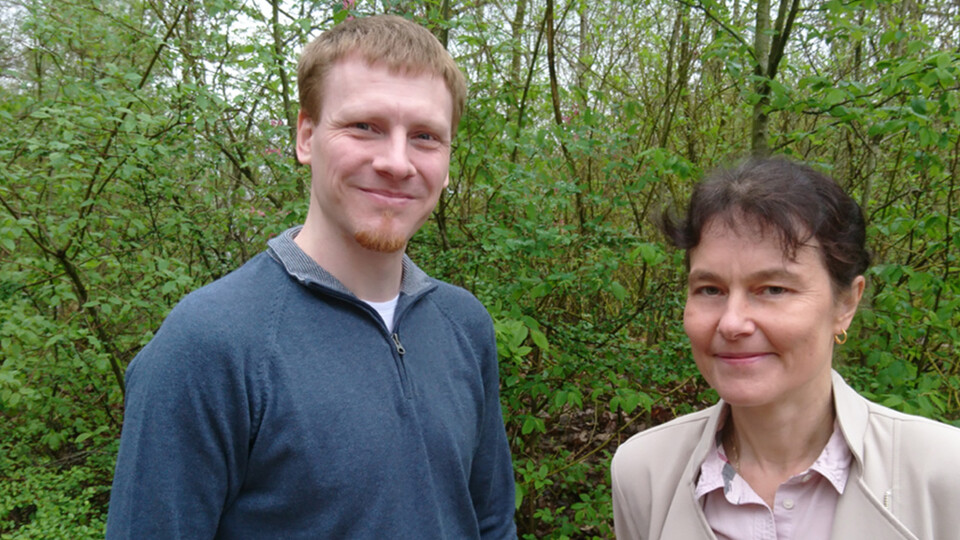

Platynereis dumerilii, a marine annelid worm, is a well-established model organism for chronobiology – the study of biological rhythms. While exploring the individual behaviors of sibling worms, Perutz PI Kristin Tessmar-Raible and her team observed behavioral differences despite robust oscillations of circadian clock gene transcripts that are typically assumed to drive behavioral rhythms. Kristin explains: “Behavioral rhythmicity is often taken as a proxy for the rhythmicity of other processes, like metabolism and gene activity: If the behavior is rhythmic, the rest is as well. However, our study reveals arrhythmic behavior in the background of rhythmic expression of core circadian clock and many other genes.”
In order to investigate behavioral differences, the team systematically compared the locomotor behavior of individual worms over time. Individuals showed a variety of behaviors ranging from highly rhythmic to completely arrhythmic. To compare the gene activity at the ends of the spectrum – highly rhythmic versus arrhythmic worms –, the authors measured gene transcripts exhibiting 24h periodic expression in each phenotype. Whilst there was no significant difference in the numbers of cycling transcripts between the two behavioral phenotypes, the types of cycling transcripts, categorized by Gene Ontology (GO) analysis, strongly diverged. The transcriptome in explorative worms was more frequently correlated with neuronal networks and locomotor behavior, whereas the transcriptome of arrhythmic, inactive worms correlated with metabolic genes. The cycling of transcripts associated with the circadian clock was, in fact, identical between both phenotypes.
High phenotypic diversity in behavior seems to correlate with the habitat range of Platynereis from rocky bottoms to rather soft seagrass meadows. Influenced by ocean currents, siblings often find themselves in significantly different environments. Once settled, however, a worm’s individual behavior, either inactive or explorative, remains stable. First author Sören Häfker says: “The more diverse the offspring, the more likely it is for some to survive. In heterogenous environments, there is thus a likely benefit for phenotypic diversity among individuals.”
Currently, the population size of marine organisms is under threat from climate change, fishing, and light pollution. "In general, marine species exhibit greater genetic plasticity compared to terrestrial organisms, increasing the likelihood that they can successfully adapt to new environments. However, smaller populations have less genetic diversity, posing challenges to their adaptation from an ecological standpoint”, Kristin explains. The rapidly changing environment raises uncertainty regarding the worms' ability to adapt as successfully in the future as they have in the past. If the internal clocks are no longer synchronized with the environment, it could lead to a survival challenge for the entire organism. The strong individual variability – even among closely related siblings – could therefore present an additional layer of biodiversity besides genetics, increasing the chances that at least some individuals are able to cope with the changing environmental conditions. Kristin, Sören and her collaborators from the Raible, von Haeseler and Schoofs (Catholic University of Leuven, Belgium) labs therefore aim to understand better how the changing rhythms of the sea impact the behavior of individual organisms and their populations.
Kristin Tessmar-Raible is a group leader at the Max Perutz Labs and at the Alfred Wegener Institute in Bremerhaven, as well as a professor at the University of Vienna, Austria and University of Oldenburg, Germany.
DOI: 10.1371/journal.pbio.3002572
About the Tessmar-Raible lab